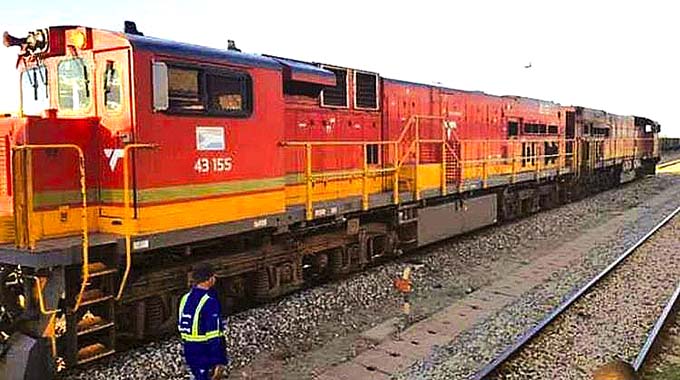NRZ engineers in major conversion breakthrough
THE National Railways of Zimbabwe (NRZ) has achieved a major innovation breakthrough after its engineers successfully managed to convert two Diesel Electric 6 (D6s) locomotive models to mainline locomotives.
The development is expected to help tackle capacity challenges on traction power at a time when the company was battling operational constraints and goes a long way in reducing hiring costs for the organisation.
NRZ public relations manager, Mr Nyasha Maravanyika, yesterday said his organisation had been hiring locomotives at a cost of US$1 500 per day, which is not sustainable for the business.
“NRZ engineers, mainly in our traction and rolling stock together with related sections, realised the need for the organisation to curtail its locomotive challenges and resorted to the conversion of its D6s locomotives to mainline locomotives, which ultimately will reduce hiring costs for the rail entity,” he said.
“The organisation has been hiring locomotives at US$1 500 per day and this intervention of the conversion project of D6s to mainline locomotives costs RTGS$100 000, thus presenting huge savings for the NRZ as this is a once-off payment and maintenance free.”
Mr Maravanyika said the conversion project has so far seen the NRZ engineers equipping two D6 locomotives (1606 and 1609) out of the targeted nine with Programmable Logic Controller (PLC).
“PLC is a transition gear that enables them to switch speeds, thus, making them run long distances at an alternating speed with more load compared to the normal D6 models, which are mostly used for shunting purposes only in our yards because they have a constant speed,” he said.
The locomotive conversion team is made up of 10, including engineers, electricians and draughtsmen and these need about a month to work on the two locomotives so far converted for use.
The two locomotives (1606 and 1609) have since been deployed on the mainline with the former operating in the Lowveld ferrying sugar and the latter doing sub-run tests between Harare and Gweru, said Mr Maravanyika.
In executing the project, the engineers faced a number of challenges that included difficulties in sourcing material parts to convert the locomotives since the D6s are old model locomotives. There was also lack of confidence from the previous management and serious doubt by the users who are train drivers.
“Initially when one of the engineers came up with the concept the previous management did not give them a chance to implement the idea, only for the new acting general manager and her management to endorse the project. With that, the engineers look forward to converting the remaining seven D6s,” said Mr Maravanyika.
“Train drivers also initially treated this concept as a ruse, thinking the old models would need close monitoring and evaluation.
“But the project has so far been successful with the locomotives being deployed into the system to increase our capacity in terms of traction power.”
Locomotive 1606 is the oldest among the D6 locomotives having been manufactured in 1965 with an axle generator and transition cards of which most of these components are now obsolete.
It is in this context that engineers resolved to change the components of the traction motors to a PLC during the conversion.
The conversion project is the first of its kind by NRZ and it is hoped that the initiative presents a plethora of opportunities for increasing capacity in terms of traction power, and reducing hiring costs, as well as equipping the D6 locomotives with flexibility for utilisation on shunting and mainline duties.-heraldc.z.w











